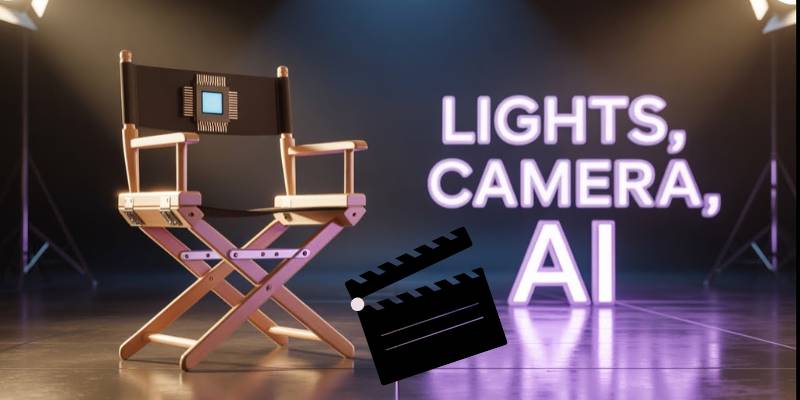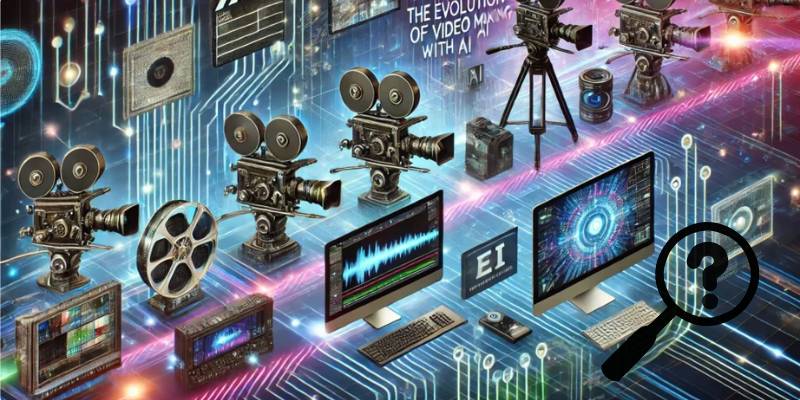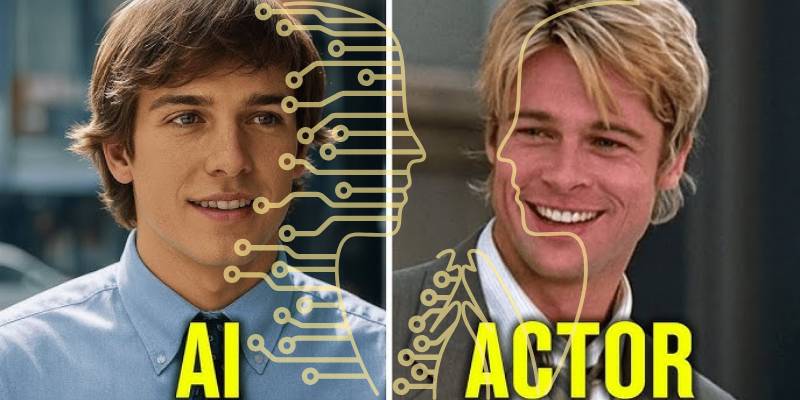The question sounds like something out of a late-night debate between cinephiles: Can artificial intelligence ever replace film directors? At first glance, it feels absurd.
Directors are the visionaries, the dreamers, the ones who coax extraordinary performances out of actors and sculpt stories into cinematic experiences. And yet, with AI now generating scripts, storyboards, and even editing rough cuts, the conversation is no longer theoretical.
I find myself torn—curious about the promise, uneasy about the implications. AI can process endless visual data, recognize patterns in storytelling, and suggest shots faster than any assistant director.
But filmmaking is more than efficiency. It’s empathy, timing, instinct. Is it even possible for an algorithm to feel when a scene is alive—or when it falls flat?
That’s what I’ll explore here: the possibilities, the limitations, and yes, the missing human touch that AI may never capture.
Chapter 1: What Does a Director Actually Do?
Before we ask whether AI can take over, let’s unpack the role of a director.
A director isn’t just someone shouting “action” and “cut.” They are:
- Story interpreters: Shaping how a script translates to screen.
- Visual composers: Deciding framing, camera movement, lighting.
- Psychologists: Guiding actors through vulnerable performances.
- Decision makers: Choosing among dozens of creative paths each day.
- Vision keepers: Maintaining a cohesive tone and message.
It’s a role that fuses artistry with leadership. A director is as much a manager as a creator.
Can an algorithm really step into that?
Chapter 2: Enter AI in Filmmaking
AI is already reshaping parts of the industry.
- Scriptwriting assistance: Tools like ChatGPT can generate story drafts or dialogue ideas.
- Editing automation: Adobe Premiere Pro’s Sensei AI trims clips, balances audio, and suggests edits.
- AI-driven animation: Programs like Runway and NVIDIA’s Omniverse create environments and motion without needing armies of animators.
- Casting predictions: Algorithms analyze actors’ box office history and social metrics to suggest who might drive ticket sales.
It’s not “science fiction.” It’s happening in production offices right now. According to PwC’s Global Entertainment & Media Outlook, AI-driven technologies could represent over $150 billion in added value to media and entertainment by 2030.
But here’s the key: using AI in these areas doesn’t mean AI is directing. It means humans are using filmmaking with algorithms as tools. The leap from tool to leader is enormous.
Chapter 3: Where AI Excels
Let’s give AI some credit. There are clear areas where it outperforms humans:
- Data analysis: Spotting trends in audience preferences.
- Pre-visualization: Generating storyboards, animatics, and even test footage in minutes.
- Budget optimization: Suggesting cost-effective shooting schedules.
- Consistency: No fatigue, no missed details, no on-set arguments.
Imagine an AI assistant that can instantly generate ten versions of a chase scene based on decades of cinematic history. That’s undeniably powerful.
And honestly, I can see directors embracing these systems not as rivals, but as hyper-efficient collaborators.
Chapter 4: Where AI Falls Short
And yet—there’s that missing human touch.
A director doesn’t just calculate. They feel. They sense when an actor is holding back or when a pause between lines carries more emotional weight than the words themselves. They can abandon the plan and chase a magical improvisation.
AI doesn’t know heartbreak. It doesn’t recognize the subtle fear in an actor’s eyes or the humor in a nervous pause. Without lived experience, how can it interpret human nuance?
Even the best AI-driven animation still looks uncanny at times. The smiles are slightly too even, the timing slightly too mechanical. That’s the difference between a scene that resonates and one that feels like a demo reel.
Chapter 5: The Ethical Layer
The conversation also isn’t just technical. It’s ethical.
If AI directs a film, who owns the vision? The studio? The coder? The dataset it was trained on (which inevitably includes thousands of human-directed films)?
And what about labor? Directors, assistant directors, editors, storyboard artists—whole ecosystems of jobs could shrink. Hollywood unions are already grappling with AI contracts, and the Writers Guild of America’s 2023 strike partly centered on AI protections.
Replacing directors with algorithms wouldn’t just disrupt—it would destabilize.
Chapter 6: Audience Reception
Let’s not forget the audience. Would people even want to watch an AI-directed movie?
A 2022 Morning Consult survey found that 60% of U.S. adults were uncomfortable with AI replacing human creative roles like writer or director. Viewers don’t just consume films—they invest in the personalities behind them. Think of Spielberg, Scorsese, Ava DuVernay, Greta Gerwig. Their names are part of the experience.
Would you go to a film proudly marketed as “directed by Algorithm X”? Or would you feel uneasy, like you’re about to watch something clever but soulless?
Chapter 7: Filmmaking With Algorithms—A Collaborative Future
Maybe the better question isn’t “can AI replace directors?” but “how can AI support them?”
I imagine a hybrid future where directors use AI for:
- Scene simulations: Running different camera setups before stepping on set.
- Performance analysis: Reviewing takes with AI feedback on pacing or emotional intensity.
- Audience testing: Predicting reactions to alternate endings.
- AI-driven animation: Speeding up pre-visualization and world-building.
This is filmmaking with algorithms, but with humans still steering the ship. The algorithm crunches the numbers. The director decides what matters.
Chapter 8: Case Studies
A few real-world examples already hint at this balance:
- Morgan Neville’s “Roadrunner” (2021): Used AI to recreate Anthony Bourdain’s voice in select scenes, sparking debate about disclosure and consent.
- AI storyboarding tools: Indie filmmakers increasingly use MidJourney or Stable Diffusion to generate concept art and pre-visuals.
- Netflix recommendation algorithms: While not “directing,” these shape what gets greenlit by predicting viewership trends.
Each case shows AI inching closer to creative influence—but not yet leadership.
Chapter 9: Future Predictions
So where does this go?
- Short-term (5 years): More directors integrating AI into pre-production, editing, and visualization.
- Medium-term (10–15 years): Studios experimenting with AI co-directors for low-budget or niche projects.
- Long-term (20+ years): Fully AI-directed films are possible—but whether audiences embrace them is uncertain.
These future predictions depend less on technology (which advances fast) and more on cultural acceptance. Audiences may tolerate AI in small doses but balk at replacing human artistry entirely.
Chapter 10: My Personal Take
I’ll admit it: part of me is fascinated by the idea of an AI-directed film. I’d watch it out of curiosity, just to see what patterns an algorithm considers cinematic.
But when it comes to the films I love—the ones that make me cry, laugh, or reflect—I don’t want an algorithm. I want a human who has lived, suffered, dreamed, and then translated that into art.
There’s a reason directors are often described as auteurs. Their quirks, their obsessions, their worldview—all of that bleeds into the work. That’s not something AI can simulate. It can remix styles, but it can’t originate a soul.
Chapter 11: A Practical Middle Ground
Maybe the healthiest stance is not fear but discernment. Instead of asking if AI will replace directors, we should ask:
- Where does AI add value?
- Where does it undermine artistry?
- How do we protect jobs while embracing innovation?
I think directors who embrace AI as a tool will thrive, while those who ignore it risk falling behind. But replacing directors entirely? That’s not only impractical—it’s undesirable.
Chapter 12: Conclusion
So, can AI replace directors? Technically, someday it might. But ethically, emotionally, and artistically, I don’t believe it should.
The role of the director is more than logistics or visual math. It’s about interpreting humanity and guiding others to express it. And that’s precisely where AI falters.
The future lies not in replacement but in collaboration—AI-driven animation, predictive analytics, and editing tools that enhance, not overshadow. It’s a future of filmmaking with algorithms, but grounded in human vision.
Because no matter how advanced algorithms become, there will always be a missing human touch—a pause, a look, a leap of faith—that makes cinema more than images on a screen.


